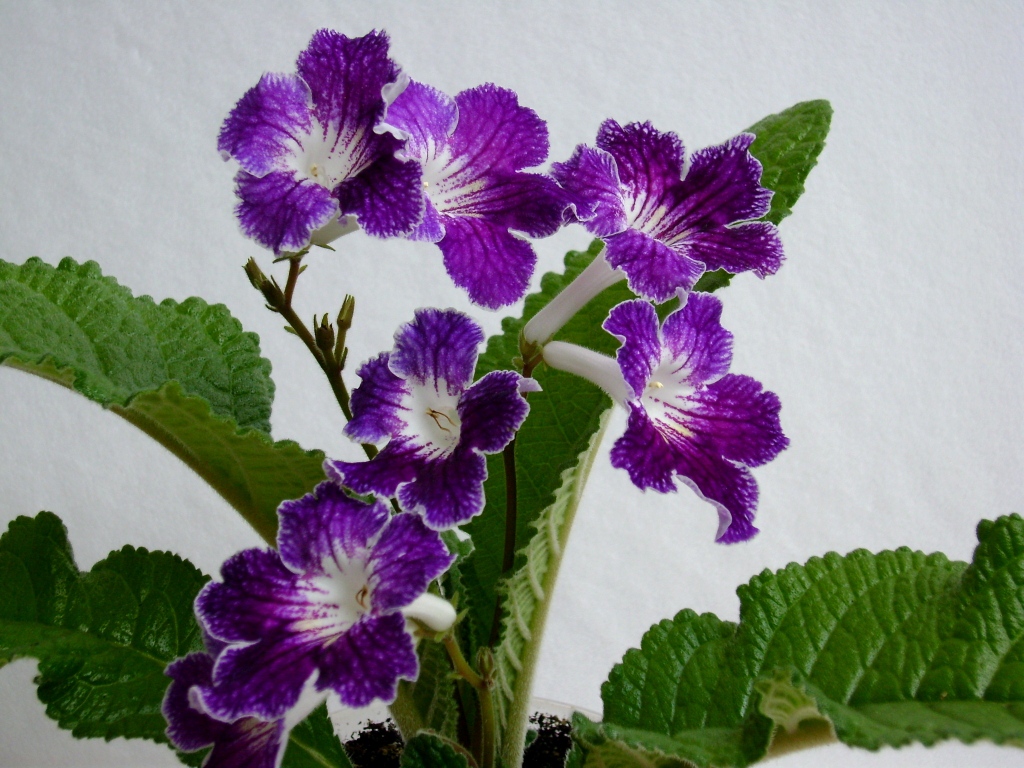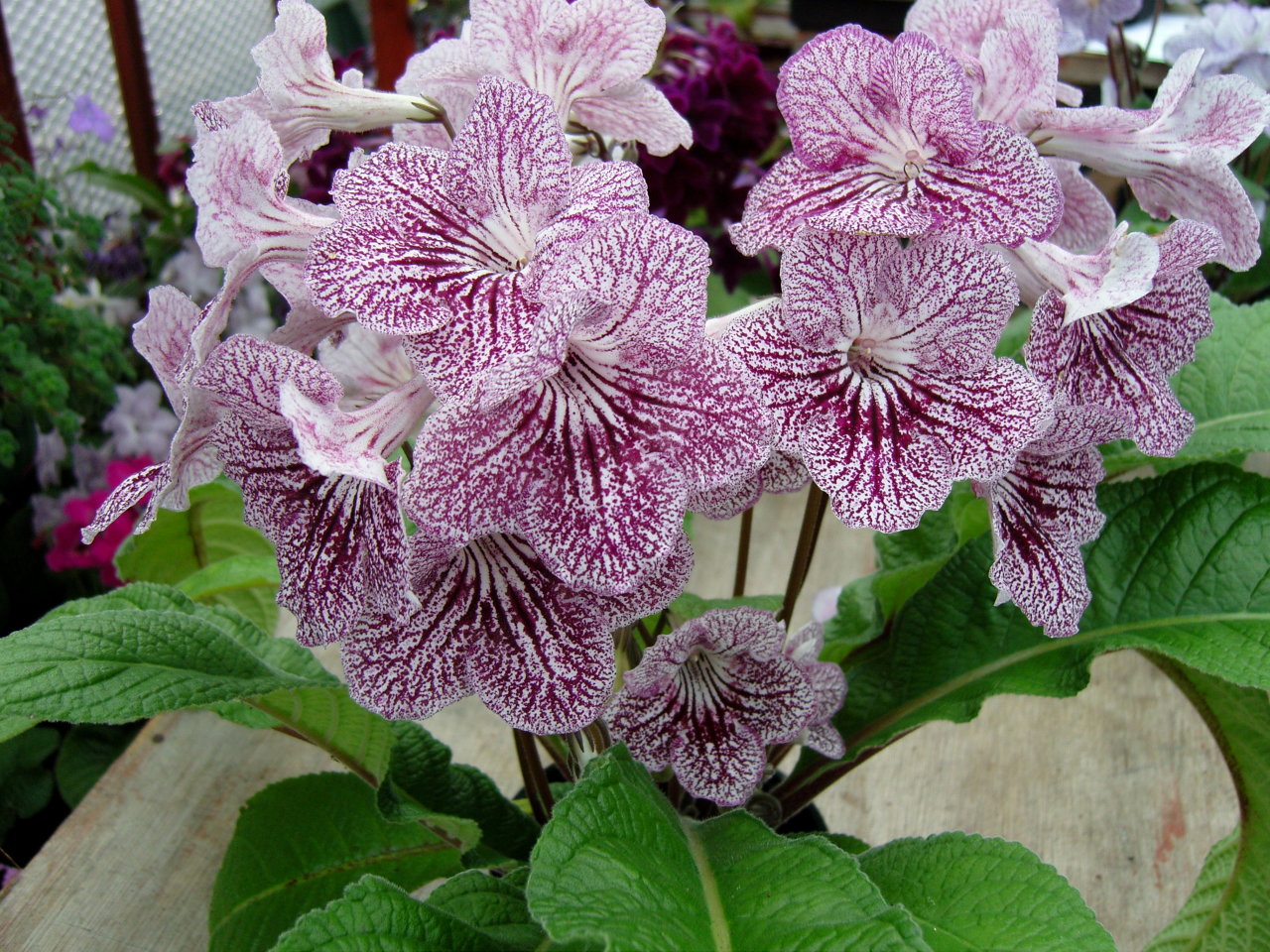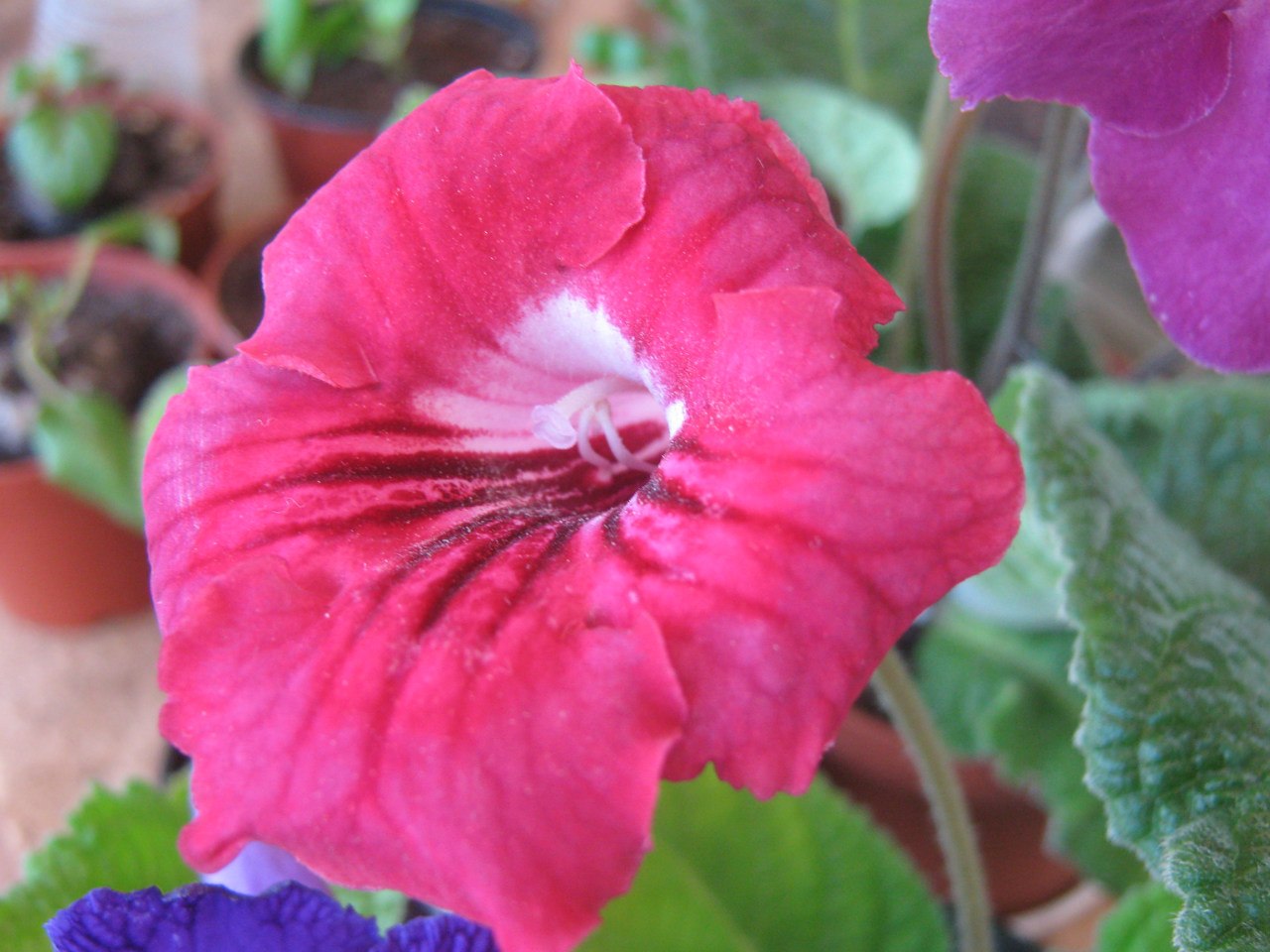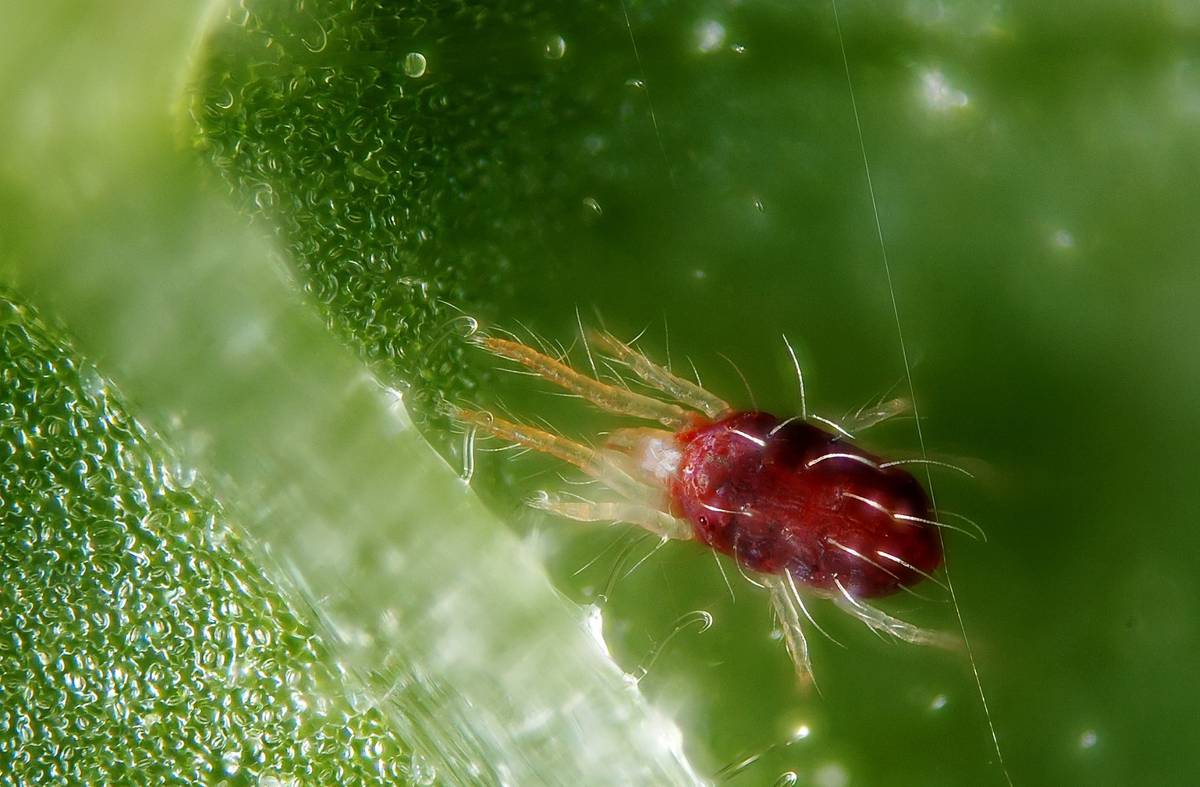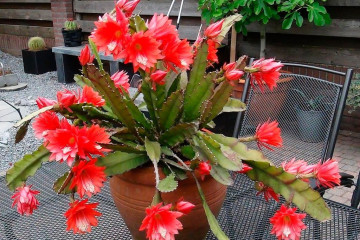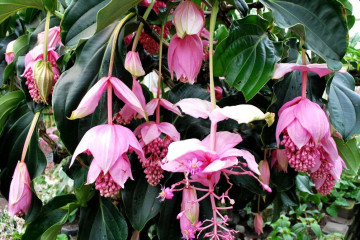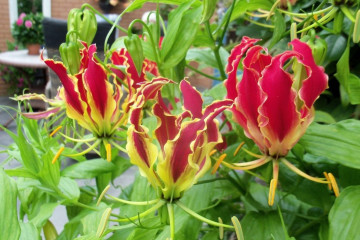Streptocarpus - home care
Content:
Streptocarpus is a tropical plant that has become popular for its exotic appearance. And if earlier it was rather difficult to grow it at home, now, thanks to the work of breeders, it has become easy to get an indoor variety. To do this, it is enough to know the basic rules for the care and cultivation of streptocarpus at home.
Streptocarpus - description, belonging to the family
For the first time, the streptocarpus flower was discovered in 1818 in the mountains of South Africa. Its name is a combination of two Greek words: streptos - curled and karpos - fruit. The bush was named for a reason. The fact is that its seeds during the ripening period are in the shape of a box. It is characterized by large leaf plates and long peduncles, on which buds of a blue or purple hue are located.
Currently, almost 150 species of wild Cape primrose are known. Some of them grow on rocky surfaces, others on trees. Depending on the variety, flowers can grow in the shade or in sunny glades. They can be both annuals and perennials. But they all have one thing in common - they belong to the Gesneriev family.
Domestic varieties are usually not large in size - they rarely reach a height of more than 40 cm, and the flower stalks grow no more than 25 cm.The leaves of the flower are quite large - 30 cm in length and up to 7 cm in width.
Blooming buds, in addition to the standard color, can have different shades:
- red,
- purple
- pink,
- yellow,
- black,
- with stripes,
- speckled,
- with patterns.
Varieties of indoor plants
Currently, there are many varieties of this houseplant. However, for novice gardeners, it is better to grow the most common varieties, which will be discussed below.
Snow-white streptocarpus (Streptocarpus candidus)
Rosette plant with shriveled leaves that grow up to 45 cm long and 15 cm wide.
The variety is characterized by a very lush flowering. White buds with purple stripes.
Streptocarpus large (Streptocarpus grandis)
The plant has one leaf of a very large size: 30 cm wide and 40 cm long. The stem reaches 50 cm in height, and at its top is a racemose inflorescence, in which the buds of a pale purple hue are collected.
Streptocarpus cornflower blue (Streptocarpus cyaneus)
In this rosette representative of the family, the stem reaches 15 cm in height. On it are pink buds with a yellow core, collected in pairs in bunches.
Streptocarpus Wendlandii
The homeland of this species is South Africa.The bush has one huge leaf plate. Its length is 100 cm, and its width is 50 cm. On a long peduncle, buds of a dark purple hue grow.
Indoor streptocarpus - home care
Domestic plant varieties are in many ways superior to violets in their appearance. At the same time, streptocarpus is less fastidious in leaving than Saintpaulia. Streptocarpus thrives and blooms in almost all conditions. But you still need to know the basic tips for proper care of it.
Illumination and temperature conditions
In indoor conditions, the plant requires natural diffused light. It is best to place it on windowsills facing the west or east side of the house.
For good flower growth from early spring to early autumn, it is necessary to ensure a temperature of 20-25 ° C indoors. From the beginning of October and during the wintering period, the plant needs cooler conditions, but not lower than 15 ° C.
Watering rules and humidity
For optimal conditions in the room, it is necessary to maintain a humidity level of 55 to 75%. On particularly hot days of summer or when there is strong heating, the air can become drier. Then next to the flower, but not on it, you can spray it with a spray bottle. A pallet of water can be placed next to the bush.
In winter and summer, the plant should be watered so often that the ground does not remain dry for a long time. With the onset of frost, the amount of moisture is reduced. In this case, it is necessary to ensure that the soil does not dry out too much and, conversely, does not form stagnant water.
Top dressing and soil quality
For the proper cultivation of streptocarpus, it needs to be planted in high-quality soil. To do this, you can buy a substrate for flowering houseplants in the store and add peat to it to improve the porosity of the mixture. When preparing soil at home, it is necessary to use light and breathable soil. It is mixed with leaf humus, river sand and peat.
For a more intensive development, streptocarpus needs nutrients. Therefore, upon awakening from hibernation, the flower needs nitrogen fertilization, and during the growing season, phosphorus-potassium supplements are required.
The easiest way to get the fertilizers you need is from gardening stores. They should be added to the soil no more than once every 8-10 days, observing the proportions indicated in the instructions on the package.
Flower container size
The first shoots of streptocarpus are planted in pots 6-8 cm in size. Then, with each transplant, the volume of the container increases.
For an adult indoor plant, a shallow pot with a diameter of 16-18 cm is enough. It is important not to transplant the bush into a large container. In this case, the development and flowering of the flower will slow down.
Pruning and replanting
Prune the plant for sanitary purposes only. To do this, in spring or autumn, yellowed or diseased fragments are removed from the bush. It is allowed to remove overgrown shoots for decorative purposes.
Streptocarpus must be transplanted regularly. The place of growth of a young plant is changed once a year. An adult plant needs only once every 3-4 years. For transplanting, low containers with nutrient soil are used. When moving a bush, it is necessary to control the moisture level of the substrate. For this, crushed charcoal is added to the soil.
Flowering features
Depending on the conditions of breeding and growing, as well as on the type of plant, the flowering of the bush can occur in different ways.
Streptocarpus can please with flowers of various sizes and shades. But they are all connected by bright color and lush volume, which many growers like.
How streptocarpus reproduce
There are several ways to propagate streptocarpus at home: by dividing the bush, from seeds and by cuttings.
Dividing the bush
This requires a strong, healthy bush. Its root system is divided in half with a sharp knife and charcoal is sprinkled over the cut site.
After that, each part of the flower is planted in a separate pot, the soil is compacted, and the plant is watered. For better germination, the bush is covered with a film.
Reproduction of streptocarpus from seeds
At home, this breeding method is very popular. The seeds are planted in a small container and covered with foil or glass. Then the seedlings are provided with regular care - they are ventilated, they provide sufficient lighting.
When the first shoots appear, they must be rooted in large trays and watered. Young seedlings should be placed where there is constant sunlight.
Cuttings
For this, a healthy piece of the bush is cut out and planted in a small pot. Then the container is covered with a film and removed to a warm, lighted place.
When the first shoots appear and the plant is strong enough, it is transplanted into a permanent pot.
Why streptocarpus does not bloom: diseases, problems and pests
A plant may not bloom for the following reasons:
- A variety is grown that simply does not bloom in the cold season.
- The age at which the plant is just beginning to gain strength.
- Streptocarpus will not bloom if it is improperly looked after. Improper watering, feeding and transplanting can cause the buds to not bloom.
To avoid such problems, the flower must be properly looked after, as well as damaged areas must be removed and the bush must be treated with fungicides.
Pests can be dangerous to a flower only if it is not properly cared for. The most dangerous are thrips, spider mites and aphids. To combat them, it is enough to regularly treat the bush with insecticides.
Streptocarpus will be an excellent ornamental plant for growing at home. The most common varieties, such as Crocus and the like, will create a sense of coziness and comfort at home.
